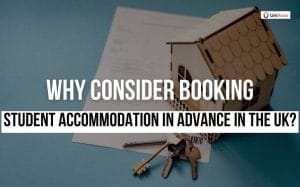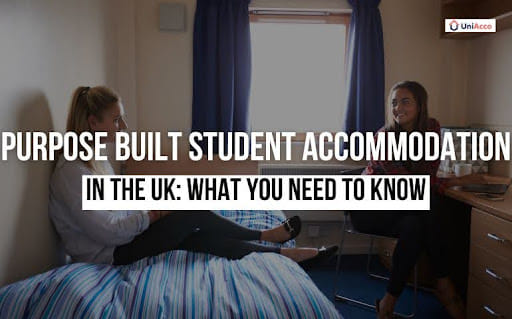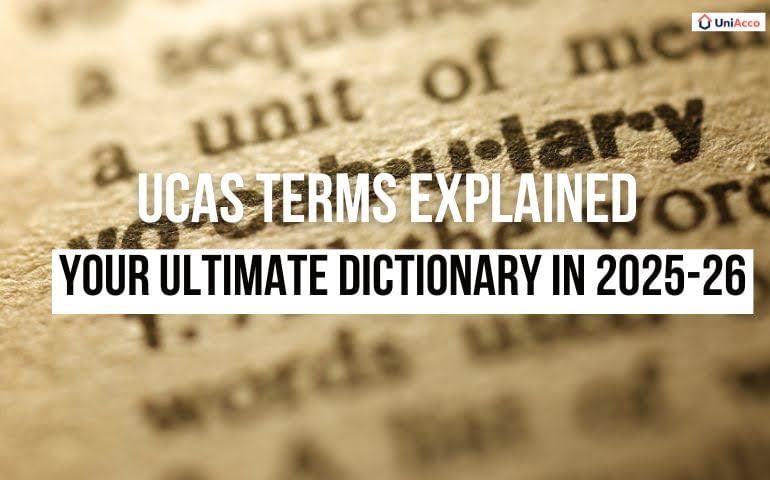Have you always thought of travelling abroad to pursue your goals, but are unsure if your budget will stretch further in Australia or the US? The cost of living in Australia vs the US is so much more than just tuition fees; it’s about rent, groceries, transport, and those hidden costs that sneak up on you. Whether you’re picturing a sunny semester in Sydney or a bustling year in Boston, understanding the real expenses is key to making your study abroad dreams a reality.
This guide breaks down everything you need to know: from housing and food to healthcare and day-to-day living. Let’s break down the cost of living in Australia compared to the US, so you can pick the place that suits your lifestyle and your wallet.
Cost of Living in Australia Vs the US – Knowing the Difference
Comparing living costs is a smart first step if you’re confused between Australia and the US for your studies. Both countries are popular with international students, but their expenses can differ in surprising ways.
Australia is known for its high quality of life, but cities like Sydney and Melbourne are also among the world’s most expensive. The US offers a wide range of options, from affordable college towns to pricey metropolises like New York and San Francisco.
Here’s a side-by-side look at the cost of living in Australia compared to the US for students in 2025:
| Expense Head | Australia (AUD) | US (USD) |
| Student Accommodation | $900 – $2,200 | $800 – $2,500 |
| Utilities | $150 – $250 | $120 – $200 |
| Public Transport | $100 – $200 | $70 – $150 |
| Eating Out (Per Meal) | $12 – $20 | $12 – $18 |
| Groceries | $300 – $600 | $250 – $500 |
Note: Currency conversion rates fluctuate, so always check the latest rates when planning your budget.
What Does This Mean for You?
- Rent: Accommodation in major Australian cities like Sydney or Melbourne is comparable to US cities such as San Francisco or Boston, often taking up the biggest chunk of your budget.
- Utilities & Groceries: Utility costs are slightly higher in Australia, but grocery costs are similar. Both countries offer student discounts at major supermarkets.
- Transport: Public transport is generally cheaper in the US, especially in cities with student-friendly passes. Australian cities, however, are known for reliable networks and offer student discounts too.
- Dining Out: Eating out costs about the same in both countries, but tipping in the US can make meals a little pricier.
Understanding these trade-offs will help you decide which country better matches your budget and lifestyle.
Comparing Education: Australia Vs the US
Both Australia and the US are home to world-renowned universities and offer an exciting student life, but which is the right fit for you?
| Aspect | Australia | US |
| Top Universities | University of Sydney, Melbourne | Harvard, MIT, UCLA |
| Annual Tuition | AUD $20,000–$45,000 | USD $25,000–$55,000 |
| Scholarships | Government & uni-based grants | Merit-based & need-based aid |
| Popular Fields | Health, Engineering, Business | STEM, Business, Arts |
Australian universities are known for their relaxed campus culture and outdoor lifestyle, while US colleges offer a diverse range of programmes and a classic campus experience.
Also read: Universities In The USA With Most Indian Students
Australia Vs US: Daily Essentials
Choosing where to study isn’t just about academics; it’s about where you’ll feel most at home. Here’s how daily life compares:
| Aspect | Australia | US |
| Safety | Generally safe, low crime rates | Varies by city, some higher rates |
| Green Spaces | Abundant parks, beaches | Parks in most cities, fewer beaches |
| Nightlife | Lively but regulated | Diverse, often open late |
| Healthcare | Medicare for residents, OSHC for students | Private insurance, mandatory for students |
| Weather | Mild winters, hot summers | Varies widely (snow to sunshine) |
- Safety: Australia is consistently ranked among the safest countries for students, while safety in the US depends on the city.
- Healthcare: In Australia, international students must have Overseas Student Health Cover (OSHC), which is affordable and comprehensive. In the US, private health insurance is required and can be expensive.
- Lifestyle: Australia’s outdoor lifestyle is a big draw, while the US offers everything from big city excitement to small-town charm.
Student Accommodation: Australia Vs the US
Finding the right place to live is crucial. Here’s how student housing compares:
Student Accommodation in Australia:
- University halls, private rentals, and homestays are common.
- Living in the city center is pricier, but the suburbs offer more affordable options.
- Most students share apartments to save money.
Student Accommodation in the US:
- On-campus dorms are popular, especially for first-year students.
- Off-campus apartments vary widely in price.
- Living further from campus can reduce rent but may increase commuting costs.
| Accommodation Type | Australia (AUD/month) | US (USD/month) |
| Shared Apartment | $900 – $1,500 | $800 – $1,500 |
| University Dormitory | $1,200 – $2,200 | $1,200 – $2,500 |
| Homestay | $1,000 – $1,800 | $1,000 – $1,800 |
Getting Around: Public Transport
Reliable and affordable transport is essential for students to commute between their accommodation, the campus, and social activities. Here’s what you can expect in Australia and the US:
Transportation in Australia:
Navigating major Australian cities like Sydney, Melbourne, and Brisbane is easy due to their well-connected public transport systems, which include trains, buses, and trams. While traveling or studying abroad, it’s also smart to secure your internet connection using the best VPN server, especially on public Wi-Fi networks. International students enjoy generous discounts of up to 30% on fares, making daily travel budget-friendly.
Monthly travel passes typically cost between AUD 100–200, depending on the city and travel zones. Smart cards like Melbourne’s Myki or Sydney’s Opal make commuting seamless, offering capped daily and weekly fares that keep costs predictable. With student concession fares available in most cities, public transport becomes a convenient and cost-effective way to explore and commute.
Transportation in the US:
Public transport costs in the US can vary significantly depending on the city. In major metro areas like New York, Chicago, and San Francisco, monthly passes typically range between USD 70 and 150. These cities offer relatively robust systems: subways, buses, and light rail, making getting around without a car easier.
However, public transport is limited in many Midwestern and Southern cities, and owning a car may be more practical. While some student discounts are available, they’re not as widespread or standardised as in countries like Australia. Students should explore local transit options and check with their university or city transit authority for any available student fares or subsidies.
Healthcare in Australia Vs the US
Healthcare is a critical consideration for international students, impacting both safety and finances during their studies.
Healthcare in Australia:
International students must purchase Overseas Student Health Cover (OSHC) for their entire stay. OSHC usually costs between AUD 500 and AUD 600 annually and covers essential medical services like GP visits, hospital care, and some prescriptions.
This insurance helps students access affordable healthcare and avoid unexpected expenses. Many universities assist with OSHC arrangements during enrollment, giving students peace of mind throughout their studies.
Healthcare in the US:
Health insurance is mandatory for international students, and annual costs range from USD 1,500 to over USD 4,000, depending on coverage and provider. Unlike Australia’s system, US healthcare is privatised chiefly and can be costly without insurance.
Student plans typically cover doctor visits, emergency care, prescriptions, and sometimes mental health services. Universities often offer their own plans or require proof of comparable coverage. It’s essential for students to carefully review options to avoid high out-of-pocket costs in case of illness or injury.
Summing Up: Which Country Should You Choose?
The cost of living in Australia vs the US depends on your lifestyle, city of choice, and personal preferences. Australia generally offers a safer environment, a laid-back lifestyle, and more affordable healthcare, while the US provides diverse city experiences and a wider range of university choices.
- Australia is a great option if you value outdoor living, safety, and straightforward healthcare.
- The US could be your perfect fit if you’re looking for variety in city life, academic prestige, and don’t mind budgeting for health insurance.
No matter where you go, smart budgeting and research will help you make the most of your international student experience. The Australia vs US cost of living debate comes down to what matters most to you, so choose the country that feels like home.
Also read: Student Guide: Cost of Living In Perth Vs Melbourne
FAQs
Q. What is the average cost of living in Australia vs the US?
Ans: Australia’s living costs for international students range from AUD 1,400 to 2,500 per month (excluding rent), totaling around AUD 30,000 annually. In the US, students spend about USD 10,000 to 15,000 per year, depending on location and lifestyle.
Q. Which country provides more affordable accommodation options for students?
Ans: Australia generally has cheaper off-campus accommodation (around AUD 800/month) compared to the US (about USD 525/month), making it more budget-friendly overall for student housing.
Q. What is the difference between the tuition fees in Australia and the US?
Ans: Australian undergraduate tuition ranges from AUD 20,000 to 50,000 per year, while US public universities charge USD 15,000 to 30,000 and private ones USD 25,000 to 40,000 annually, making US tuition generally higher.
Q. How much does it cost to travel in Australia vs the US?
Ans: Australia’s daily public transport fares range from AUD 5.50 to 11, with student concessions available, while US monthly passes cost USD 70 to 150, varying widely by city and coverage.
Q. Which country is more cost-effective for food and groceries?
Ans: When comparing cost of living in Australia vs US for food and groceries, Australia tends to be more affordable overall. Monthly grocery expenses in Australia range from AUD 300–600, while in the US they are higher, typically between USD 400–800.
Also read: Cost Of Living In The UK















0 Comments